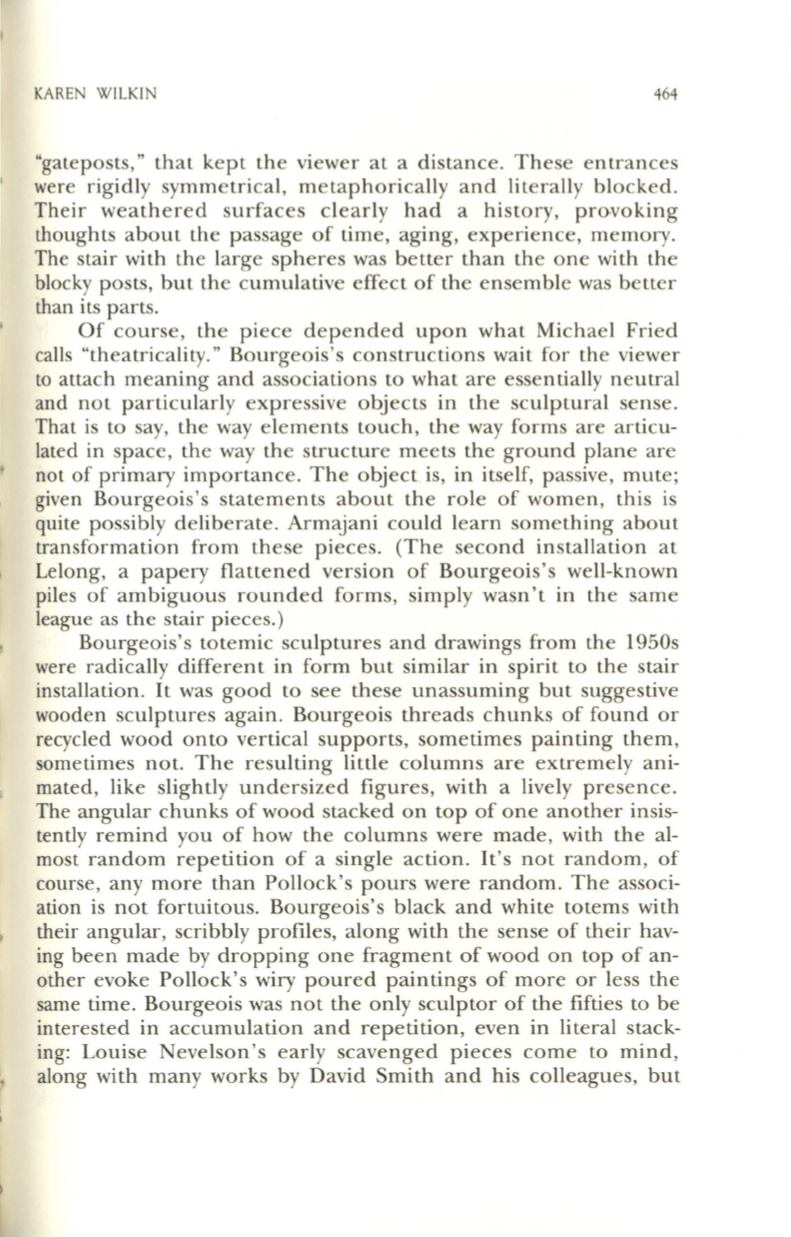
KAREN WILKIN
464
"gateposts," that kept the viewer at a distance. These entrances
were rigidly symmetrical , metaphorically and literally blocked.
Their weathered surfaces clearly had a history, provoking
thoughts about the passage of time, aging, experience, memory.
The stair with the large spheres was better than the one with the
blocky posts, but the cumulative effect of the ensemble was better
than its parts.
Of course, the piece depended upon what Michael Fried
calls "theatricality." Bourgeois's constructions wait for the viewer
to attach meaning and associations to what are essentially neutral
and not particularly expressive objects in the sculptural sense.
That is to say, the way elements touch, the way forms are articu–
lated in space , the way the structure meets the ground plane are
not of primary importance . The object is, in itself, passive, mute;
given Bourgeois 's statements about the role of women, this is
quite possibly deliberate. Armajani could learn something about
transformation from these pieces. (The second installation at
Lelong, a papery flattened version of Bourgeois's well-known
piles of ambiguous rounded forms , simply wasn't in the same
league as the stair pieces.)
Bourgeois's totemic sculptures and drawings from the 1950s
were radically different in form but similar in spirit to the stair
installation. It was good to see these unassuming but suggestive
wooden sculptures again. Bourgeois threads chunks of found or
recycled wood onto vertical supports, sometimes painting them,
sometimes not. The resulting little columns are extremely ani–
mated, like slightly undersized figures, with a lively presence.
The angular chunks of wood stacked on top of one another insis–
tently remind you of how the columns were made , with the al–
most random repetition of a single action. It's not random, of
course, any more than Pollock's pours were random. The associ–
ation is not fortuitous . Bourgeois's black and white totems with
their angular, scribbly profiles, along with the sense of their hav–
ing been made by dropping one fragment of wood on top of an–
other evoke Pollock's wiry poured paintings of more or less the
same time. Bourgeois was not the only sculptor of the fifties to be
interested in accumulation and repetition, even in literal stack–
ing: Louise Nevelson's early scavenged pieces come to mind,
along with many works by David Smith and his colleagues, but


